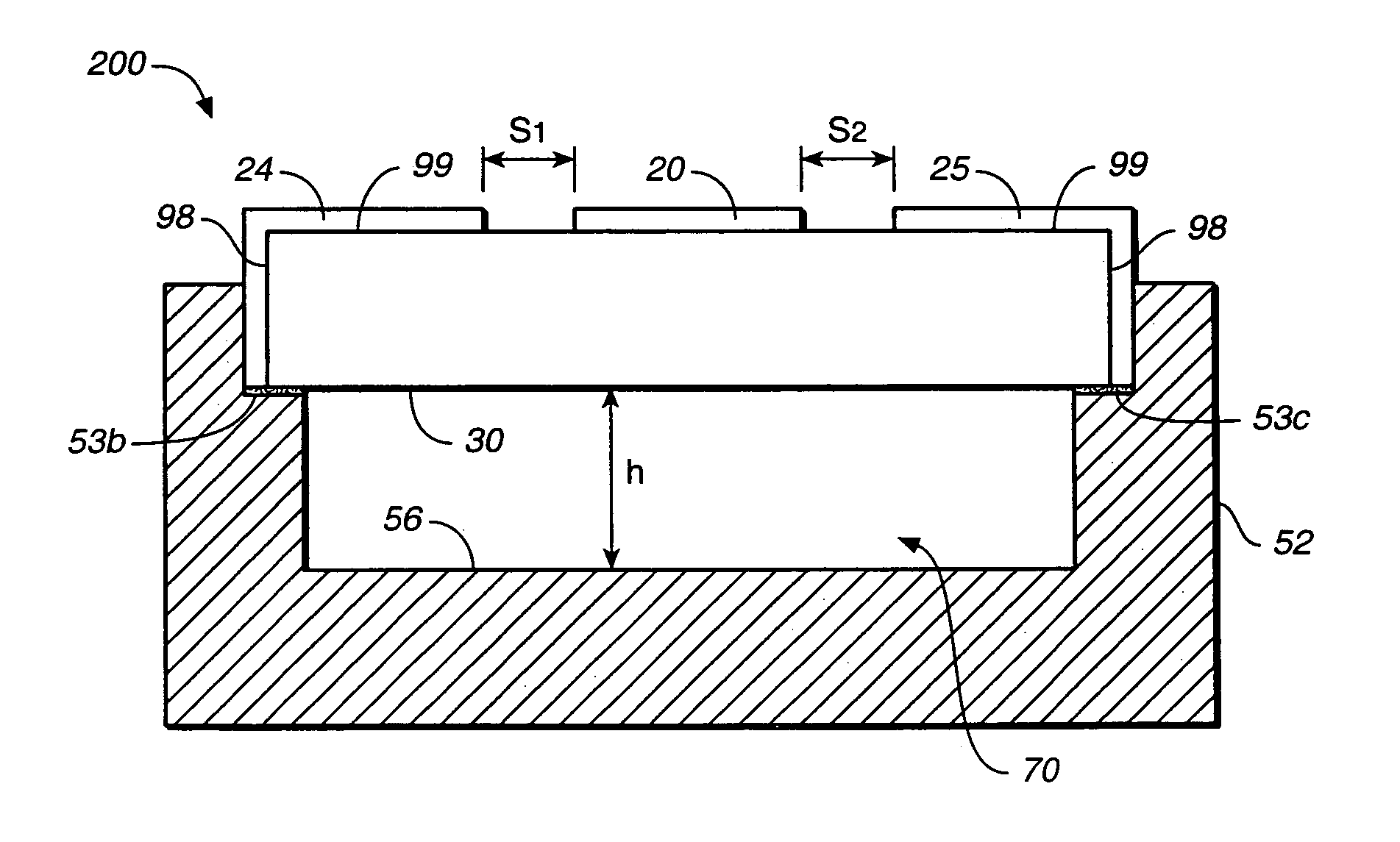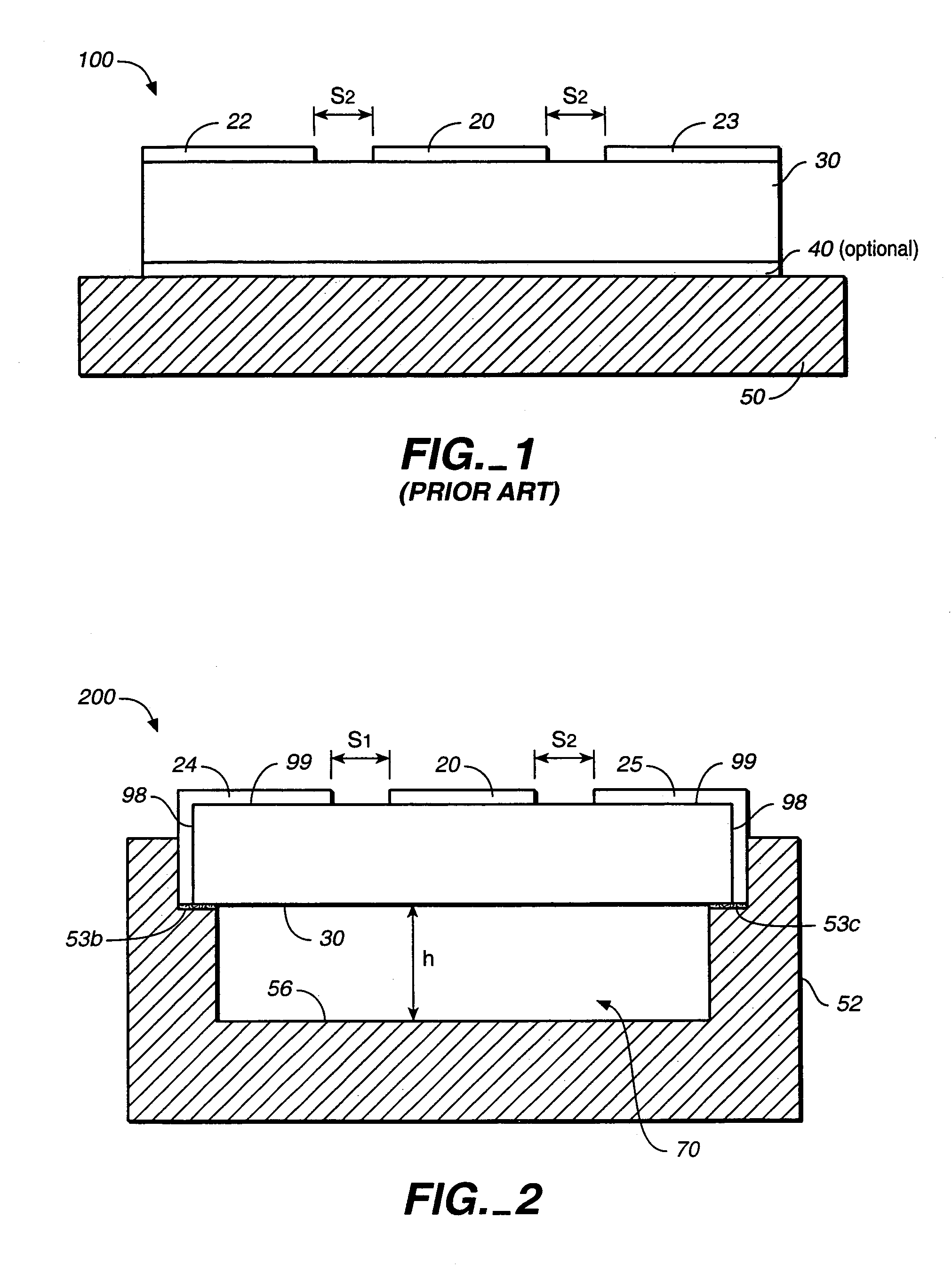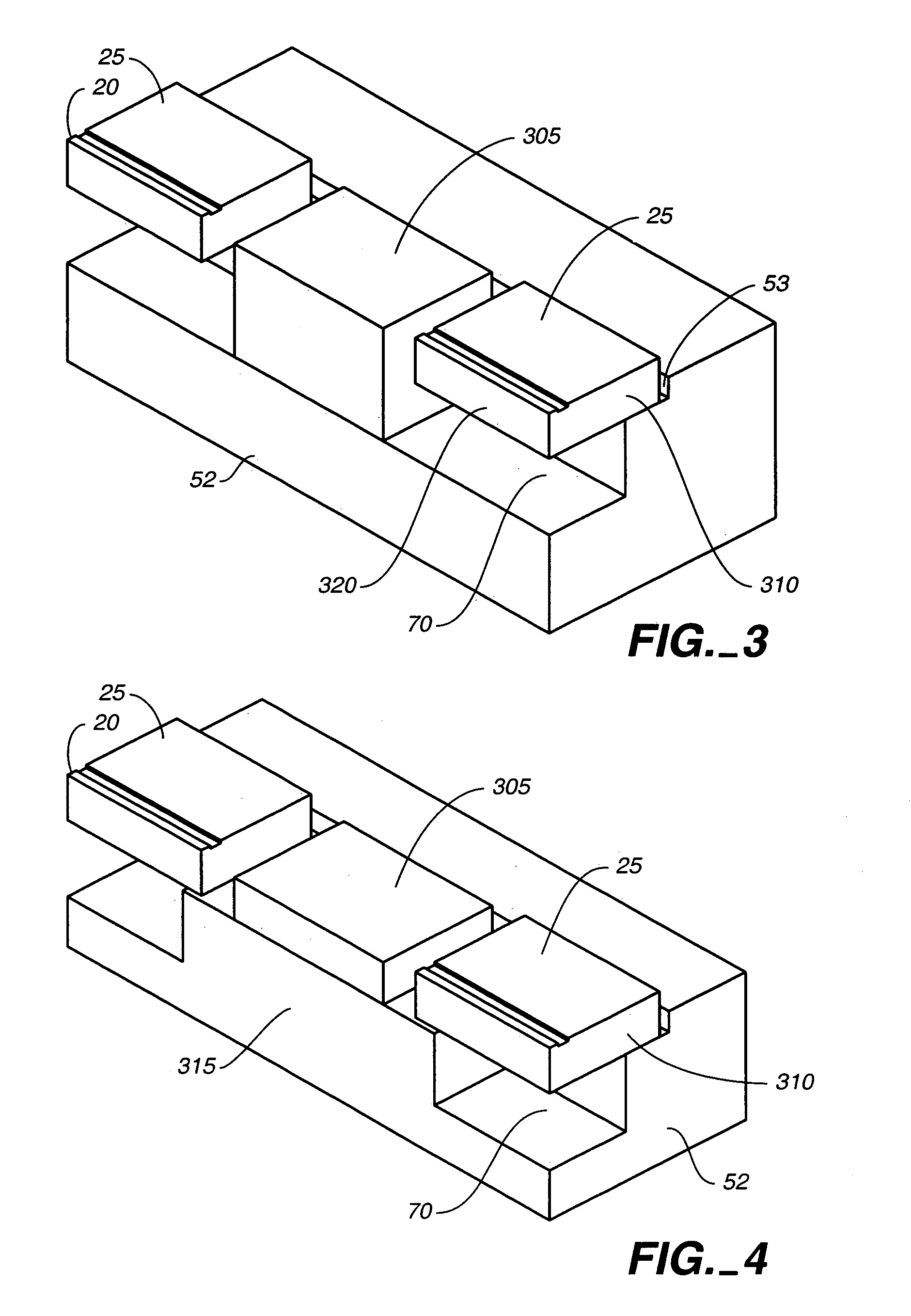Suspended and truncated co-planar waveguide
- Summary
- Abstract
- Description
- Claims
- Application Information
AI Technical Summary
Problems solved by technology
Method used
Image
Examples
Embodiment Construction
[0029]FIG. 2 shows a CPW structure 200 that includes a substrate 30 and a signal conductor 20. The CPW structure 200 has ground conductors 24 and 25 that wrap around from a top surface 99 of the substrate 30 onto the lateral faces 98 of the substrate 30. Having the ground conductors 24 and 25 extend around and over the lateral faces of the substrate provides the CPW structure 200 with an electrical side-wall boundary that acts to mitigate the effects of spurious mode generation. Suppression of spurious modes will be discussed in greater detail below.
[0030]In alternative embodiments, the lateral faces 98 of the ground conductors 24 and 25 that cover the lateral faces 98 of the substrate 30 could be replaced with electrically equivalent structures. For example, grounded castellated conductive bands (not shown) that extend along the length of the lateral faces 98 of the substrate 30 could be used to provide the electrical side-wall boundary effect. Alternatively, grounded laterally spa...
PUM
 Login to View More
Login to View More Abstract
Description
Claims
Application Information
 Login to View More
Login to View More - R&D Engineer
- R&D Manager
- IP Professional
- Industry Leading Data Capabilities
- Powerful AI technology
- Patent DNA Extraction
Browse by: Latest US Patents, China's latest patents, Technical Efficacy Thesaurus, Application Domain, Technology Topic, Popular Technical Reports.
© 2024 PatSnap. All rights reserved.Legal|Privacy policy|Modern Slavery Act Transparency Statement|Sitemap|About US| Contact US: help@patsnap.com










